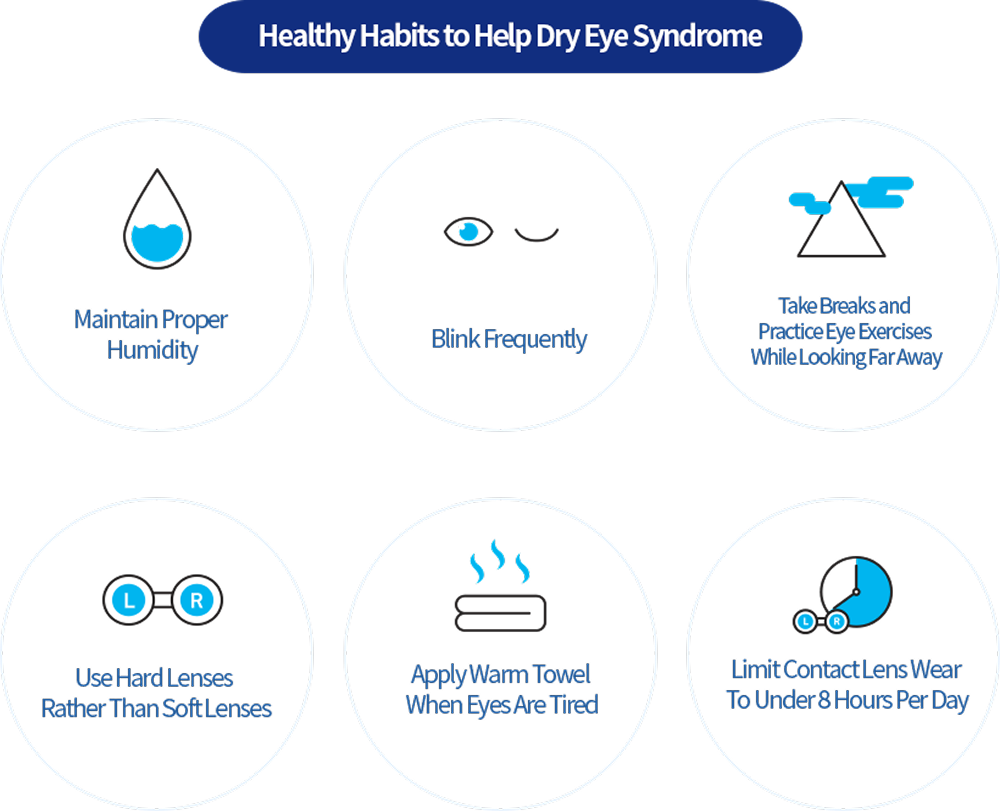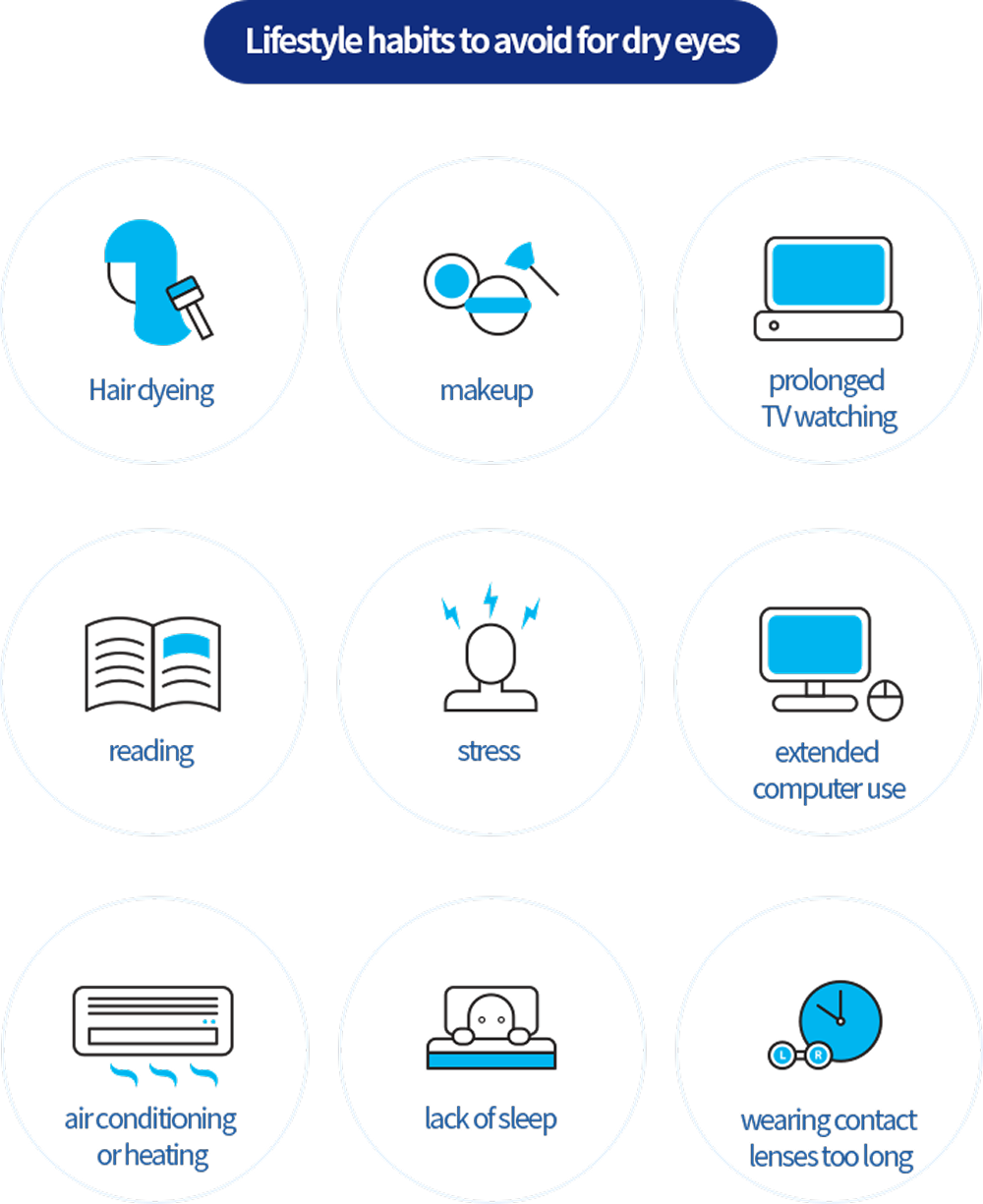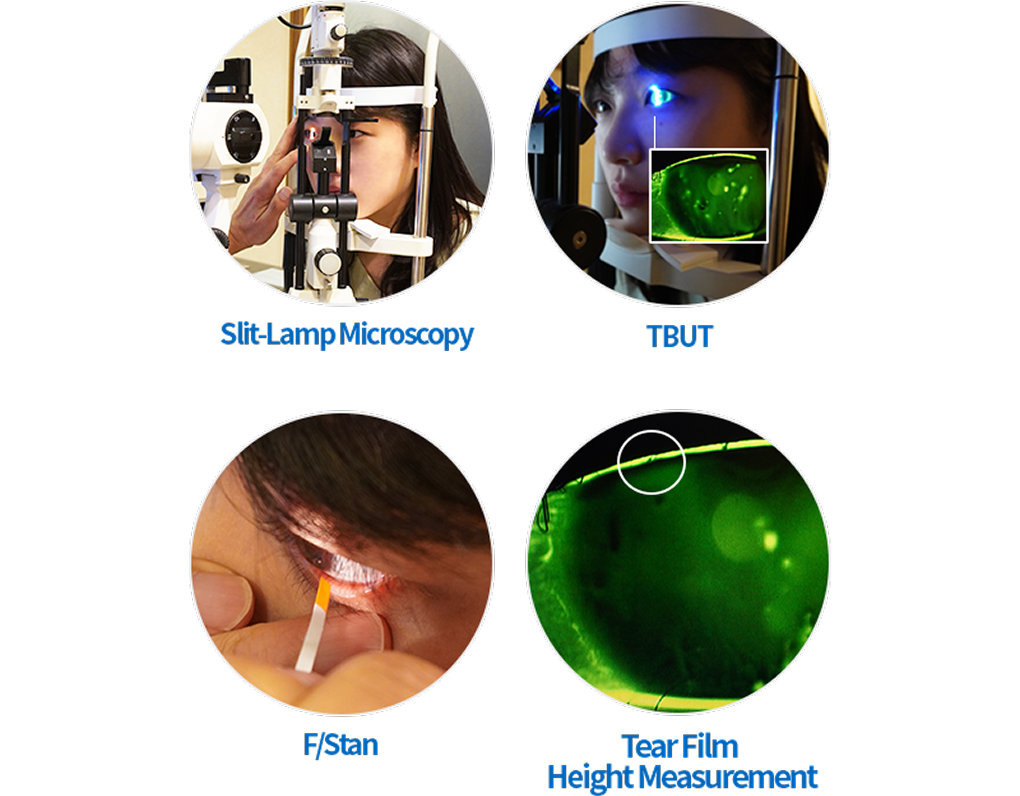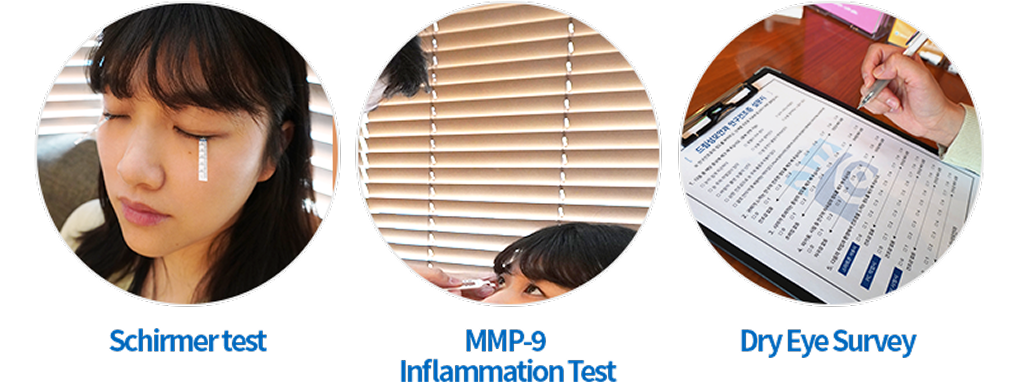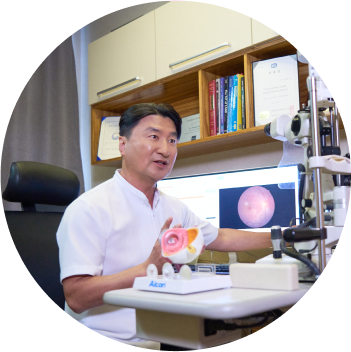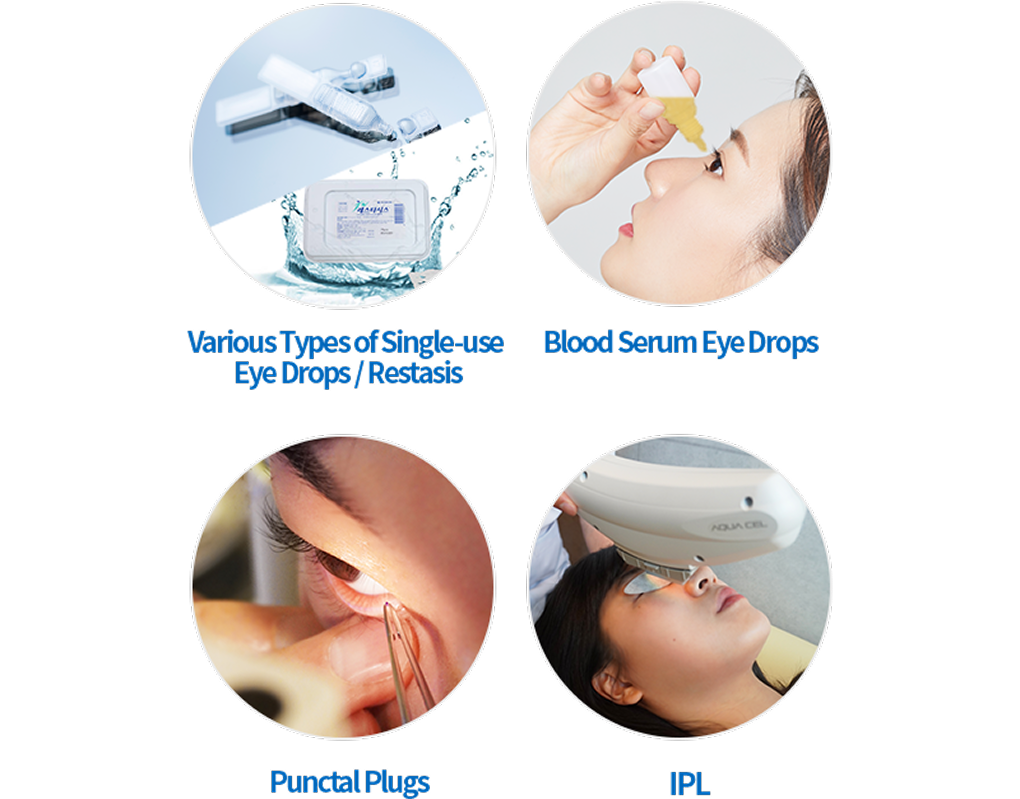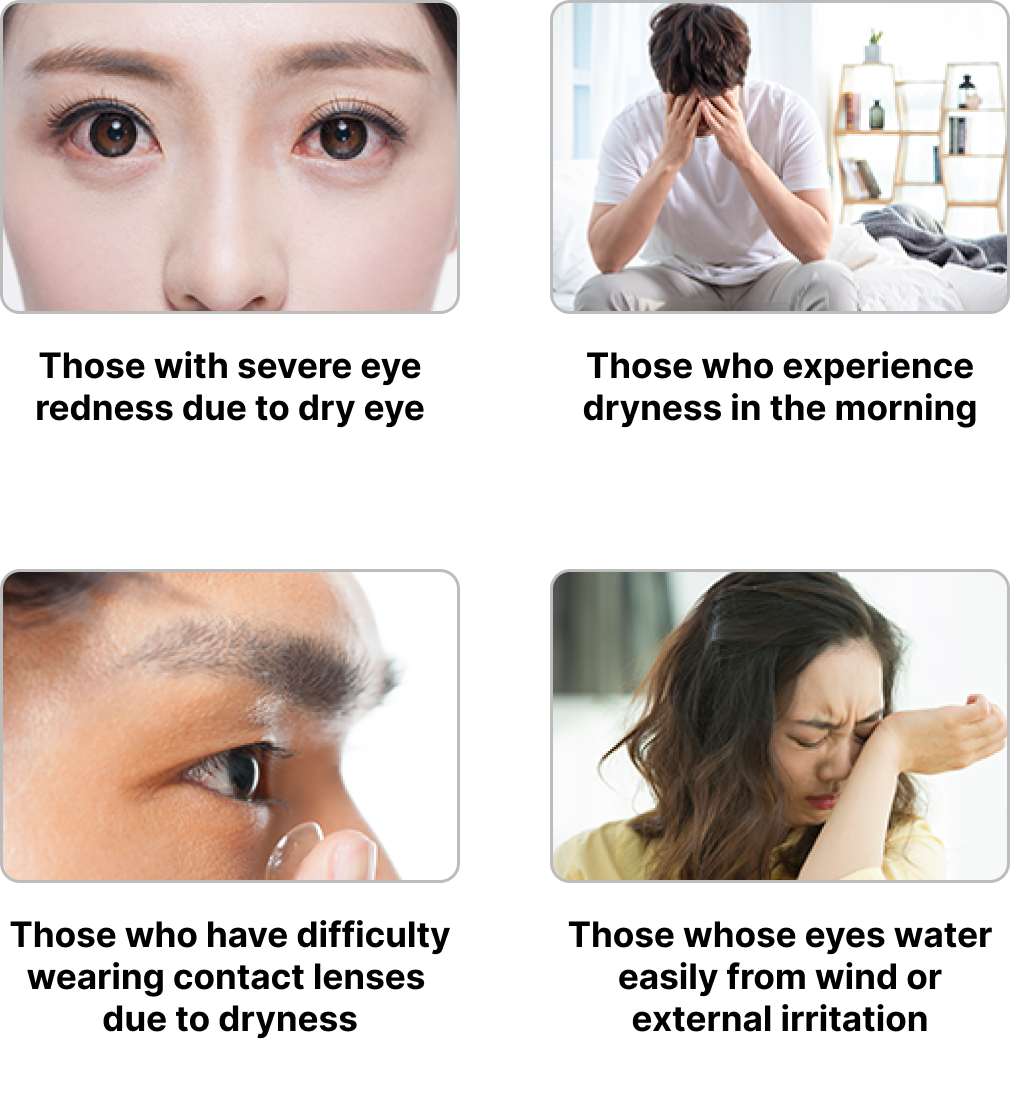


Tears play the role of protecting the surface of the eye from foreign substances.
Tears form a protective layer over the eyes and help wash away foreign substances, kill bacteria, and supply oxygen, playing a role in protecting the cornea and conjunctiva.
When 1. tear production decreases or 2. tear evaporation increases, the eyes cannot maintain their protective function, leading to irritation. This is called Dry Eye Syndrome.






Nowadays our environments like long time use of computers, smartphones, or polluted air can damage tear production and worsen symptoms. If your eyes feel uncomfortable, early examination and consistent monitoring are important.
What Happens When the Tear Film Breaks?
Is This Could Be Dry Eye Symptoms?
Common Symptoms of Dry Eye Syndrome
-

A feeling of dryness or tired
-

Blurry vision
-

Glare
-

Worse in the morning or evening, especially in dry
-

environments
-

Foreign body sensation ,eye redness
-

Discomfort with contact lenses, red eye
-

Watery eyes
What Happens Without Treatment
or Prevention of Dry Eye Syndrome?
-
1
Dry eye symptoms can occur more frequently and get more severe.
-
2
It may become chronic, making it harder to treat.
-
3
Corneal damage or inflammation may occur, possibly leading to vision problems.
-
4
The development of micro vessels leads to red eyes.
What cases Dry Eye?

Tears are composed of a lipid layer, an aqueous layer, and a mucin layer. The lipid layer plays a role in preventing the aqueous layer from evaporating easily, acting like a lid. The innermost mucin layer helps the aqueous layer stick well to the corneal surface to protect it.
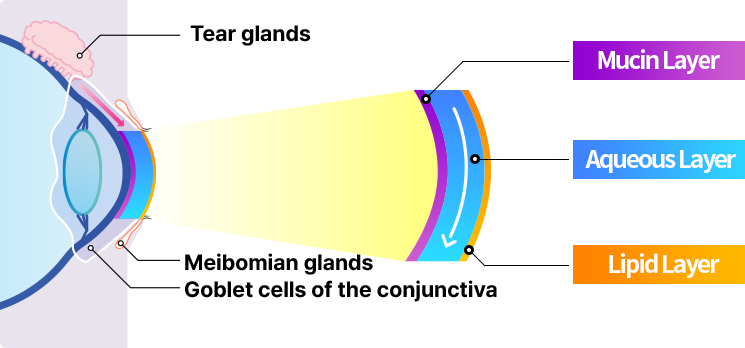
-
Mucin Layer
Surface AdhesionTo keep the tear film stable and ensure it clings to the cornea and conjunctiva, the mucin secreted by goblet cells helps the tears adhere to the eye surface and prevents them from sliding off or evaporating too quickly.
-
Aqueous Layer
Moisture SupplyProduced by the lacrimal glands, this layer moisturizes the eye, removes dust, allergens, and microorganisms, and helps wash them away. It also contains antibodies and immune substances to prevent infection and inflammation.
-
Lipid Layer
Surface CoatingProduced by the meibomian glands, this thin oil layer coats the tear film and prevents the aqueous layer underneath from evaporating.
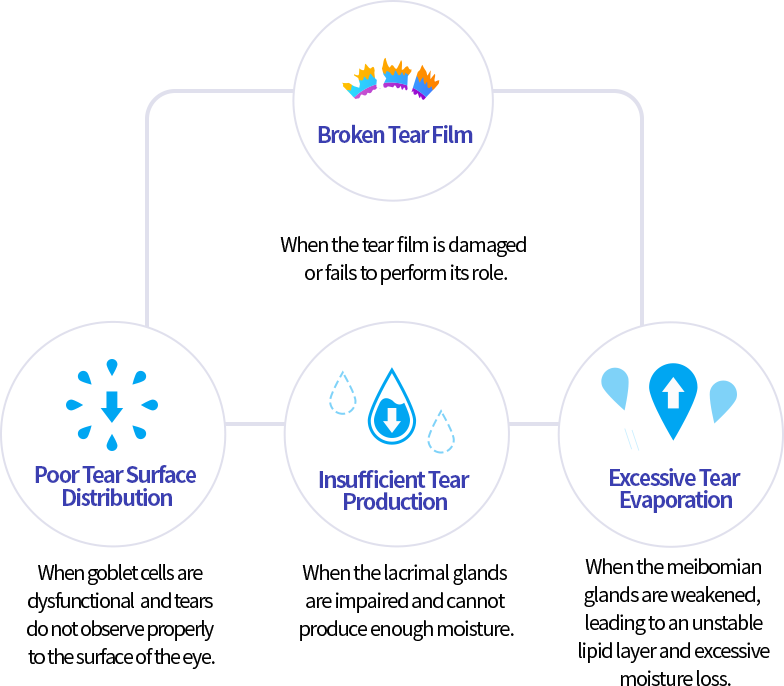
What Are the Fundamental Causes
of Dry Eye Syndrome?

-
1
Enviroment
-
2
Eye Diseases
-
3
Life Style
-
4
Aging
-
5
Tear Gland Dysfunction
-
6
Refractive Surgery/ Contact Lenses
-
7
Hormonal Changes After Menopause
-
8
Medication Complication
-
9
Diabetes and Other Chronic Diseases
-
10
Immune System Disorders
-
11
Facial Paralysis










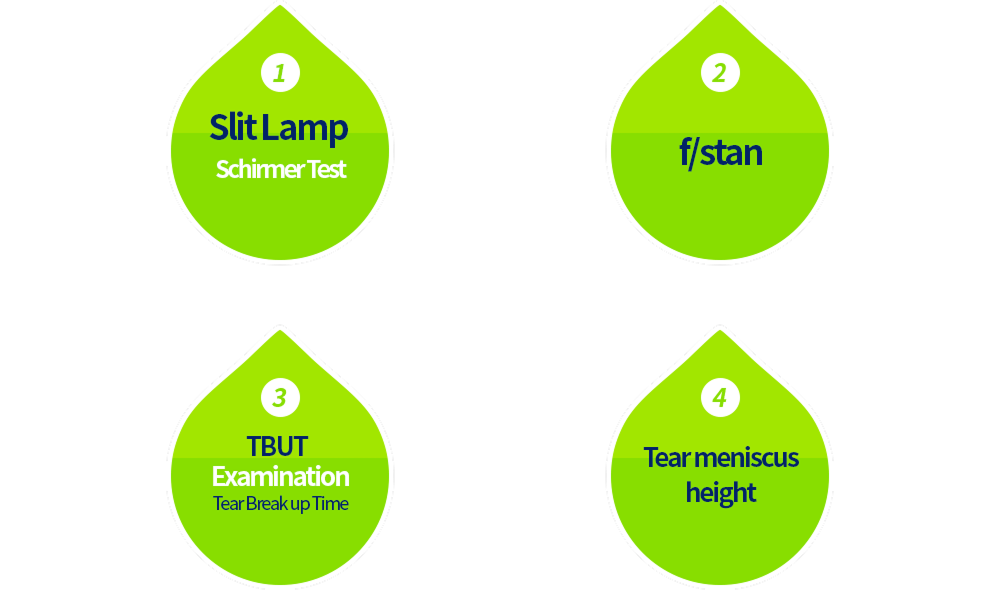


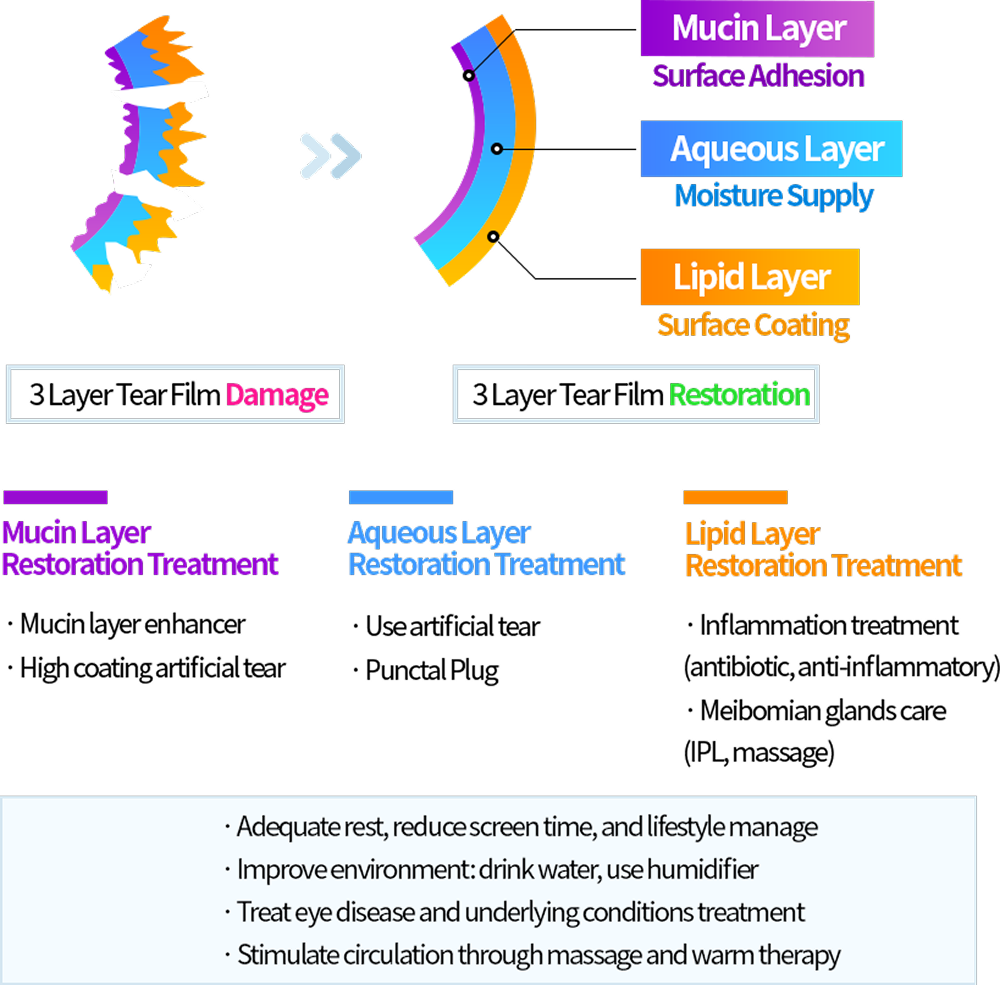
-
1. Artificial TearsArtificial tears supply moisture directly to the eyes. Depending on the symptoms, it can be used together with a gel. This helps quickly stabilize the tear film and prevent dryness.
-
2. Antibiotic and Anti-inflammatory Eye Dropsp treat inflammation caused by dry eye, which supports the healing process and improves comfort.
-
3. Punctal Plug Insertion (Punctal: the opening where tears drain)To retain tears on the eye surface longer, punctal plugs can be inserted. It temporarily or permanently block the tear drainage path, slowing tear drainage and helping retain moisture on the eye. The procedure is quick and simple, and the effect can last 3–4 months with minimal side effects.
-
4. IPL Aqua CelIPL uses light energy applied to the skin to stimulate the meibomian glands, which produce the oil layer of the tear film. It improves the oil secretion balance and helps relieve dry eye symptoms caused by oil shortage.

-
1. Immune System TreatmentImmune treatment can be combined with punctal plug insertion if needed.
-
2.Eye Disease TreatmentTreating eye diseases is the first step.
Inflammation : Studies showTreating eye diseases is the first step. that inflammation is involved in 40–60% of dry eye cases. For mild cases, mild anti-inflammatory eye drops (steroids) or hyaluronic acid-based drops are used to reduce inflammation and support tear production. In moderate to severe cases, cyclosporine-based eye drops ( Restasis, Ciclosporin) may be used regularly for 3–4 months to control inflammation and improve symptoms.
A problem with the mucin layer of your tears : Use of anti inflammatory and Diqua can be used together. This is especially effective in patients whose is low during dry eye testing.
A problem with the aqueous layer of your tears : Need to use artificial tears more frequently, and also consider punctal plugs. A plugs help keep tears on the surface of your eyes longer by slowing down how quickly they drain away.
A problem with lipid layer : Treatment is done by reducing eyelid inflammation and helping the glands open up using warm compresses, gentle eyelid massage, proper eyelid cleaning, and sometimes oral antibiotics. Improving the oil layer helps prevent your tears from evaporating too quickly and keeps your eyes more comfortable. -
3. Medication Adjustment for Disease ManagementLong term use of medication without medical supervision can have negative affect. Especially antihistamine medication may reduce inflammation but also decrease tear production. Medication should be used only when necessary and avoid long term use. Medications that affect stress hormones or cortisol may also lead to hormonal imbalance, which can contribute to dry eye. A lack of vitamins, especially vitamin A, can worsen tear quality and inflammation. It is recommended to eat a nutrient-rich diet and take eye health supplements that support tear production and balance.
-
4. Eye Care to Prevent AgingAs we age, our eyes naturally experience the aging process. One of the symptoms is a decrease in tear film production. With proper treatment, aging can be slowed down. To maintain healthy eyes, it is important to support the cells responsible for tear production and take eye supplements that contain antioxidants. Managing lifestyle factors such as stress, diet, and massage can also be helpful. Wearing sunglasses to protect your eyes from UV rays is highly recommended.

-
1. Blinking and RestBlinking and Rest When using computers, smartphones, TVs, or reading, people tend to blink less than necessary. It's important to practice intentional blinking and take regular breaks. A good rule : every 20 minutes, take a 20-second break .
-
2. Humidity ControlMaintaining proper humidity helps prevent severe dryness. Avoid dry environments, including exposure to hair dryers, air conditioners, and dry weather. Raising indoor humidity and using a warm towel on the eyes before sleep are recommended.
-
3. Refractive Surgery & Contact LensesSurgeries like LASIK and LASEK that involve corneal cutting can cause nerve damage, potentially leading to dry eye. To minimize dryness, it's important to choose procedures that preserve more of the corneal structure. Wearing contact lenses for extended periods can also irritate the cornea and worsen dryness. Avoid wearing lenses and allow your eyes to rest.
-
4. External EnvironmentDry office air, pollution, and dust can trigger or worsen dry eye symptoms. Try to adjust your lifestyle to reduce environmental stress on the eyes. Wearing sunglasses or UV-blocking eyewear helps protect against cell damage. Avoid overly bright or extremely dark environments, as both can worsen dryness.
